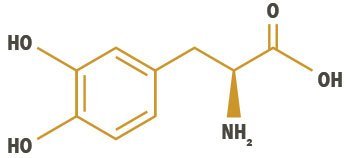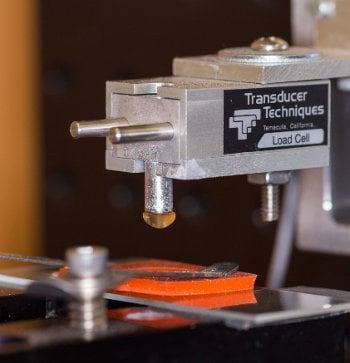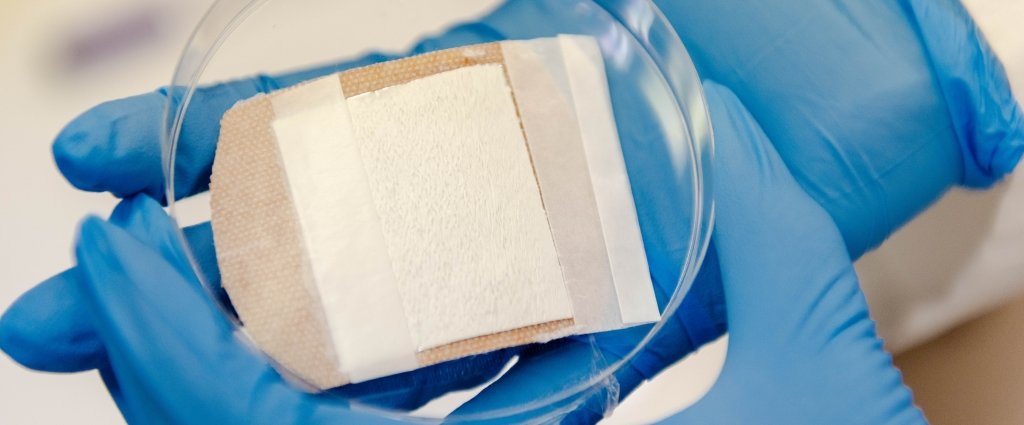Removing an adhesive bandage can be the stuff of nightmares. Pulled hair. Pinched skin. Toddler tears and screams.
Ironically, keeping the bandage on can often be even more of a pain—the smallest amount of moisture can destroy the strongest of adhesives.
But what if you could turn the “stickiness” of your band-aid on and off for pain-free removal? And what if the band-aid was waterproof so that it only came off when you wanted it to?
These ideas may sound too good to be true, but thanks to the work of Bruce Lee, assistant professor of biomedical engineering at Michigan Tech, “smart adhesives” may soon be a reality.
Mussel Power
Lee’s work focuses on adhesives inspired by nature. More specifically, the natural glues are made by mussels that anchor them to rocks, boats, and docks. Lee’s past work on hydrogels and tissue adhesives led him to look more closely at what makes these adhesives work underwater—and how people could use them.

“This work is novel in the sense that there is no smart adhesive out there that can perform underwater,” he says. “The chemistry that we can incorporate into the adhesive, causing it to reversibly bond and de-bond, is quite new.”
Lee’s ideas caught the attention of the Office of Naval Research, which earlier this year recognized him with a Young Investigator Program (YIP) award. As a YIP participant, Lee plans to continue delving into not only what makes mussels sticky but also how to reverse that adhesion.
Stuck on Biomimicry
Lee looks at a specific amino acid found in mussel foot proteins, called DOPA (3,4-dihydroxyphenylalanine), which is related to dopamine. In past research, he and his graduate students showed that DOPA could be manipulated to design a hydrogel actuator, which is a mass of jello-like polymers lined with iron bands that enable it to move on its own.

The challenge now is to figure out how to apply an electric current, causing the DOPA-based adhesive to release, and then reapplying the current to make it glue-like again.
He adds there is also a biomedical component: “Think of a band-aid—our adhesive would be a less painful way to remove a bandage—or being able to detach or reattach a prosthetic limb or a wearable sensor.”
Sean Kirkpatrick, chair of the Department of Biomedical Engineering, says Lee’s work is a good example of innovative and creative research.
“The YIP program is one of the most selective research funding programs in the country,” he says. “The fact that Lee received this award shows that the faculty and the research programs in the Department of Biomedical Engineering are on par with the best programs in the nation.”
"A smart adhesive can bind sensors underwater, it can attach to a ship hull, it potentially could help underwater robotics or unmanned vehicles, and integrate with naval systems."
Recently, Lee and PhD student Ameya Narkar published some of their preliminary findings in Chemistry of Materials, a high- impact journal, showing the role that pH levels (acidity) play in controlling adhesive strength. “Lower pH levels result in a stronger adhesive, and higher pH levels mean a weaker adhesive, so it’s a reversible process,” Lee says.
“Our goal right now is to demonstrate feasibility and understand the chemistry of strong adhesion and weak adhesion in relation to wet surfaces,” Lee says. “Our long- term goal is to use electricity to tune the adhesive property—or turn it on and off.”
Basic Science, Practical Application
To Lee, the key to making this research project work is leaving it fairly open-ended. Basic science is about understanding the mechanism of a phenomenon—in this case, the chemical reactions driving adhesion. The materials and research can then be tailored for more specific uses.
He also says collaboration is an important part of his work and is one of the reasons he received the YIP Award.
“We have a lot of water-focused research going on through the Great Lakes Research Center (GLRC), and I’ll have opportunities to collaborate with colleagues on campus,” Lee says, adding that he will work closely with Guy Meadows, the center’s director, to test the adhesive on underwater autonomous vehicles.
“Lee’s work has the potential to change the way we connect components underwater,” Meadows says, explaining that he and other GLRC researchers started working with Lee to naturally attach a camera to a living, five-foot-long Great Lakes sturgeon to learn where they go after spawning.
Lee’s work also has the potential to impact the daily lives of average people.
“Think about Post-It Notes and duct tape,” he says. “A Post-It Note is a weak adhesive and can be attached multiple times, but it loses its adhesive quality over time. Duct tape, on the other hand, is a strong adhesive and difficult to remove. But once you remove it, its adhesive quality is significantly diminished—in many instances, it’s worthless.”
With Lee’s research, simple household items like bandages, Post-It Notes, and duct tape could be used repeatedly, and even adhere to wet surfaces, reducing waste and costs.
From following fish to healing wounds to monitoring submarines, Lee’s mussel-inspired adhesion research is sure to stick around a while.
Michigan Technological University is an R1 public research university founded in 1885 in Houghton, and is home to nearly 7,500 students from more than 60 countries around the world. Consistently ranked among the best universities in the country for return on investment, Michigan's flagship technological university offers more than 185 undergraduate and graduate degree programs in science and technology, engineering, computing, forestry, business, health professions, humanities, mathematics, social sciences, and the arts. The rural campus is situated just miles from Lake Superior in Michigan's Upper Peninsula, offering year-round opportunities for outdoor adventure.





